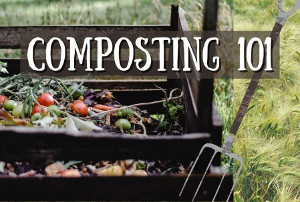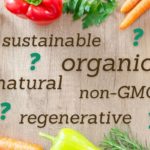Biodegradable vs Compostable – What’s the Difference?

Biodegradable vs Compostable – What’s the Difference?
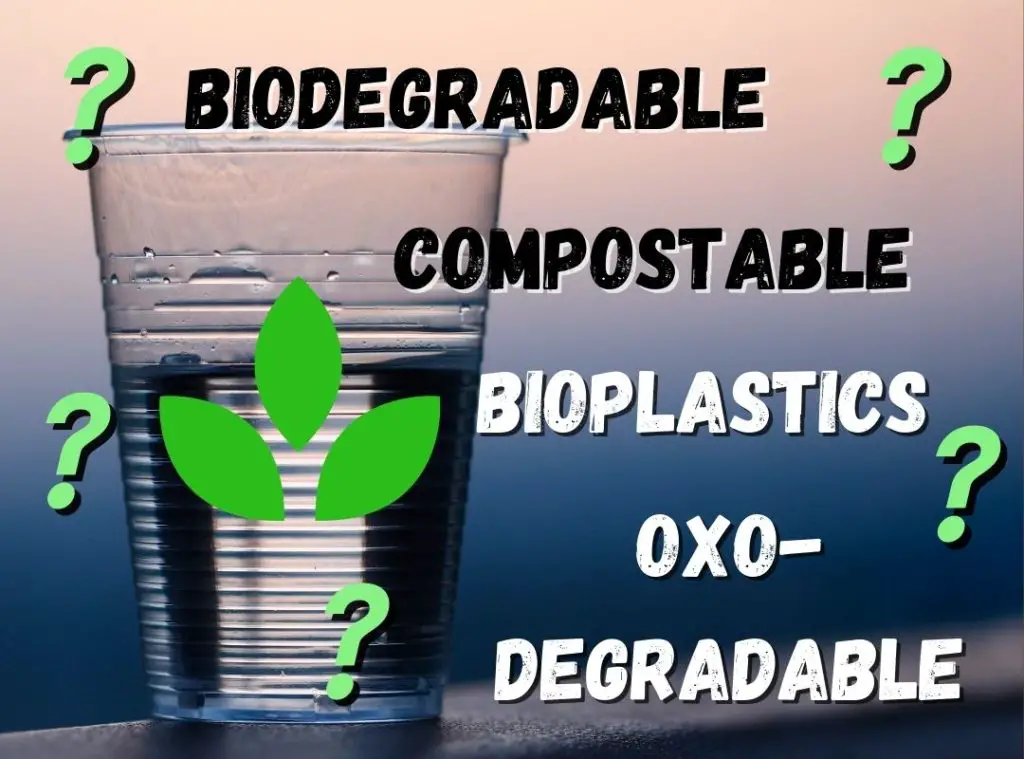
Perhaps you have seen terms such as “Compostable,” “Biodegradable,” “Bioplastics” or “OXO-degradable” on product packaging. You may have wondered, what’s the difference between biodegradable vs compostable? What is a bioplastic? These labels have different meanings, so let’s dig in a bit to define them.
First of all, let’s get this out of the way – if you are going to be throwing these items in the trash, these labels don’t matter much. Why? Because in the landfill almost nothing breaks down anyway. (Check out “What Happens in a Landfill?“)
Biodegradable or compostable items are only useful if you have somewhere to put them where they actually have a chance to degrade. Let’s define these terms and discuss what you should do with these materials.
Common Product and Packaging Labels:
Biodegradable
This label is not regulated and means next to nothing. All “biodegradable” means is that, eventually someday, this thing will biodegrade. There is no certified standard for the timeframe or environmental conditions needed for this to happen. So technically, you could call any plastic cup “biodegradable” because if you give anything enough time (like thousands or millions of years), it will eventually biodegrade.
Four states have actually made it illegal to label products as “biodegradable” because it is so misleading. Calling something “biodegradable” gives consumers the false impression that a given product is more environmentally friendly than another, when it may not be. Ignore the label “biodegradable,” it is basically meaningless.
Bioplastic (aka PLA plastic)
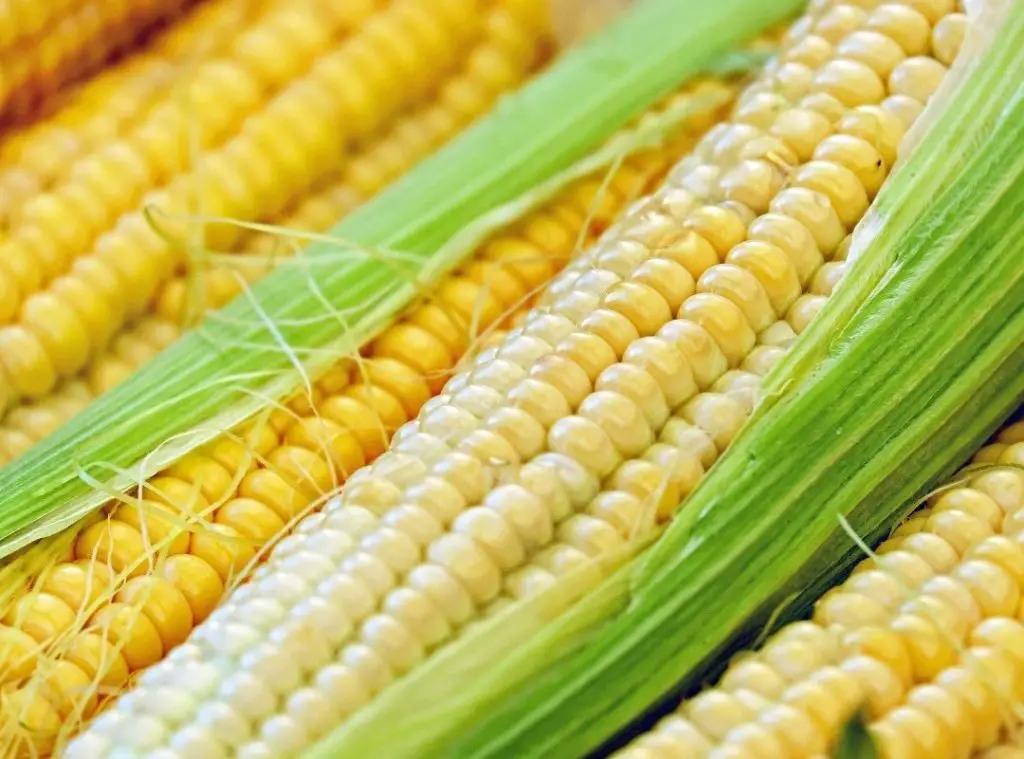
A bioplastic or PLA (Polylactic Acid) plastic is simply a plastic product that was made from a biological source like corn, cassava or sugar cane rather than from a fossil fuel like oil. It might be a more eco-friendly alternative to traditional plastics due to the fact that it is created from a renewable resource that creates lower carbon emissions, but these types of plastics come with their own issues, so they aren’t a perfect solution either.
Regardless, these materials have to be highly processed to behave like a plastic, so the fact that it is made from plants doesn’t necessarily mean it is compostable. It may or may not be. Look for the “compostable” label instead (see below).
OXO-degradable or OXO-biodegradable

AVOID THESE PRODUCTS. A plastic item that is “oxo-degradable” means that it will break down faster than traditional plastic, but those little pieces may not ever fully degrade, leaving behind millions of micro-plastic particles in the environment. This is not eco-friendly in any way. And you definitely don’t want this in your compost.
Compostable
The label “compostable” is regulated and standardized by agencies like ASTM International. However, don’t assume that this means that you can throw any item labeled “compostable” into your backyard compost bin and expect it to break down. Many of these materials will only break down in a commercial composting facility that uses high heat.

Look for the phrase “home compostable” or “backyard compostable” or a certification from an organization like Vincotte (see image). These items can go in your compost bin. The Home OK Compost certification from Vincotte is currently the only certification available for home compostables, and few items will qualify for this.
If your item says “commercially compostable” or “industrially compostable” then it isn’t going to be appropriate for your compost pile. If it just says “compostable” with no further information, then you should also assume it is only compostable in a commercial facility.

Organizations like the Biodegradable Products Institute are pushing manufacturers to provide clear labeling and instructions for consumers, because you shouldn’t have to have an Environmental Science degree to figure this stuff out!
Check out this great explainer video on biodegradable plastics by One Army. They actually test out some “compostable” plastics to see if they degrade in a variety of environmental conditions over the course of a year. (Spoiler – they don’t. That’s why they need to go to a compost facility with the right conditions.)
Summary:
Compostable plastics are bioplastics (made from biological materials) and they are biodegradable, but not all bioplastics or items labeled “biodegradable” are compostable. So the label to pay attention to, at least when it comes to figuring out how to dispose of something, is the label “compostable.” Specifically “home compostable” if you want to actually put it in your bin or compost pile at home.
If you have a curbside service that takes your compostables, or a nearby composting facility, you can check with them to see if they accept the “compostable in a commercial facility” items. They may be okay with compostable bags. Hard plastic items like forks and spoons may be less desirable. If the composting facility doesn’t want it, it goes in the trash.
Problems with Compostable Plastic
Compostable plates, cups, forks, spoons, bowls and bags seem like a great idea, and probably can be in the right situation. But they have several problems when it comes to current use.
Composting facilities aren’t available to everyone.
Compostable bioplastics are only useful if you have someplace to send them where they can be handled appropriately. As mentioned above, for people doing their own composting at home, most of these compostable bioplastics simply won’t break down. And not all composting facilities will take them.
They often aren’t collected properly.

I recently went to a conference, and the lunches were packaged with “compostable” wrappers and utensils. Great idea, except there was nowhere to dispose of them. Our only disposal options were cans for “Trash” and “Recycling.” Most attendees didn’t seem to even notice the compostable labels at all, but others, probably trying to do the right thing, were throwing the utensils and wrappers in the recycling bins. So now the recycling was contaminated with a bunch of non-recyclables.
They are hard to tell apart from regular plastic.
Most compostable dishware looks similar or identical to regular plastic utensils. That means that non-compostable plastic can easily end up mixed in with the compost.
Commercial composters use visual screening to look through the truckloads of compostables that arrive at their facility, and they can’t take the time to pick out and inspect every fork or spoon to find out which ones are compostable or not. It causes a huge headache, so for now most composting facilities are simply not accepting compostable plastic items.
Where do we go from here?
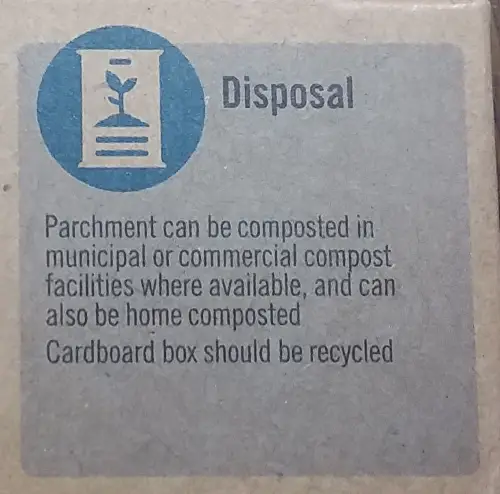
Compostable and bioplastic products may have a role to play in allowing us to package materials more sustainably and create less plastic waste and greenhouse gas emissions in future. However, we have some distance to go to make them more practical and useful. Clear labeling and education is needed, as well as the development of better compostable products that are fully and easily biodegradable in a non-toxic way.
As always, it’s still preferable to choose reusable items over disposable items whenever they are an option.
New to composting?
Check out Green and Grumpy’s Composting 101 – a beginners guide to getting started!

